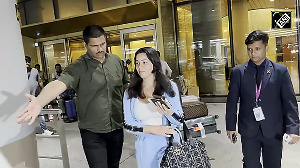
While good content is a primary requirement, allowing visitors to interact on your platform will help you gather a larger following and attract advertisers
Telecomtalk.info, an internet community that offers information, news and views on all things related to mobile and telecomunication, started as a website by a college student trying to figure out the best mobile tariff plan for him.
Now, it has matured into a platform where readers and viewers ask questions and interact with experts.
“I created the platform because I was searching for the best plan and could not get the required information on a specific website.
Soon, people who had similar problems and information to share started visiting my platform and posting on it.
"It started with less than 10,000 views per month and today we get about two million views per month," says Tarun P K, founder and chief editor, Telecomtalk.info. Tarun’s mantra for success: “Allow your audience to interact if you want to attract eyeballs on your platform, blog or website,” he says.
Noida-based Nisha Madhulika started her cookery blog in 2007. She converted it into a website in 2008.
Encouraged by her readers, she started posting videos on YouTube in 2011. Once she had about 100 videos with a sizeable viewership in six months, YouTube got in touch with her asking her if she would like to monetise them.
Today, her channel gets about 500,000 to 600,000 views per day.
She uploads an average of two to three videos per week, sometimes more during festivals.
“Initially my husband and son used to help me shoot the videos and upload them.
"I have a team of four to five people, including an editor and camera operator now. If your content is good, then you can start earning within a few months," she says.
Blogs are great place to start.
Over time, people move on to investing in creating a website or a paid blog as their readers grow and the content owner has a firm idea of how they want to build on what they started.
Paid blogs and websites offer more flexibility better storage limits and most importantly the domain name, says Satya Raghavan, head -- entertainment partnerships, YouTube.
Content and networking
“Good content means good traffic. This will ensure more eyeballs. And more eyeballs will translate into more advertisements (ads) and, more revenue," Tarun says.
And specialisation is important as it is focussed and allows one to create higher-quality content.
Networking with experts from the sector, attending events such as product launches, interacting with your audience are equally important.
“If readers or viewers get a chance to share their views, they will come back.
"Always offer this option. Right from the start, this has been one reason for our popularity," says Tarun.
Agrees Madhulika: “My viewers regularly request recipes which I then include in my videos. I also take tips from YouTube on how to make the presentation better," she says.
There are some other ways content creators especially with online video can earn revenue.
“Once you gain popularity online, content creators also start doing offline events and work with different brands either to create promotional content or branded product integrations,” says Raghavan.
How do advertisers decide?
Online advertising is increasing exponentially.
“It is growing at the rate of about 35-40 per cent annually and a lot of bloggers are making money from their content,” says Rajiv Dhingra, chief executive officer of Wat Consult, a Dentsu Group agency.
The main categories of online content that attract advertisements now are food, fashion, technology and travel.
Reach and popularity are the two crucial factors that advertisers take into account when deciding which blogger or YouTuber (for videos) to advertise with.
“Some channels or bloggers might be very popular, but there must also be a fit with the brand," explains Dhingra.
To gauge popularity, advertisers look at metrics like subscribers, number of views, blog ranking in alexa, traffic, etc. Next, they look at the fit with the brand.
Then they take into account whether advertising with the blog or video will offer them good value for money.
Which brands advertise online
Brands that target youth might prefer to advertise only online because television viewing is not very high in this segment, says Dhingra.
Besides, any brand wanting to target the top metros will advertise online because internet penetration is high there. Brands targeting a specific audience also take the online route.
A medical equipment manufacturing company that is looking to target doctors would prefer to advertise online, rather than show its advertisements in cinema halls or run them on radio.
A home decor company wanting to target architects may look for bloggers offering related content.
Revenue model
The rates for advertisements depend primarily on demand and supply.
They vary with the blogger’s or YouTube channel’s reach and popularity. Availability of alternatives -- other bloggers and content providers in the same space -- also determines rates. Rates for online media are calculated in terms of cost-per-1,000 impression, cost-per-view (for videos), and cost-per-click for performance (for a banner ad, the rate depends on how many clicks it receives).
The average CPM rates are Rs 50-60/CPM, cost-per-click is Rs 3-15 and cost-per-view is Rs 2-5 per view.
Google AdSense, a platform that allows publishers to place ads, has revolutionised online advertising.
“That is the first step for any content provider to monetise his content.
"Now with native advertising (akin to advertorials in print) growing, where you get sponsored content, it is much easier for publishers to sign up and monetise," Dhingra says.
There are guidelines for monetisation on YouTube and AdSense. You choose the ad format, layout and even integrate ads on video content on your website, says Raghavan of YouTube.
MONETISING THE CONTENT
- Besides creating the website or YouTube channel, start participating on social media platforms such as blogs, Twitter and Google+
- Sign up with Google AdSense for advertising
- For ads with AdSense, publishers receive 68% of the revenue recognised by Google
- Google follows an automated-bidding mechanism, so the rates are decided by how much an advertiser is willing to pay
TOOLS TO GET STARTED
- On the Blogger dashboard, click the blog you want to run ads on
- In the menu on the left, select Earnings > AdSense
- Sign up for AdSense n Select to use your existing Google Account or create a new one
- Complete the application form, review the information, then agree to terms and conditions
- Wait for your application to be approved Source: Google
The image is used for representational purpose only








 © 2025
© 2025